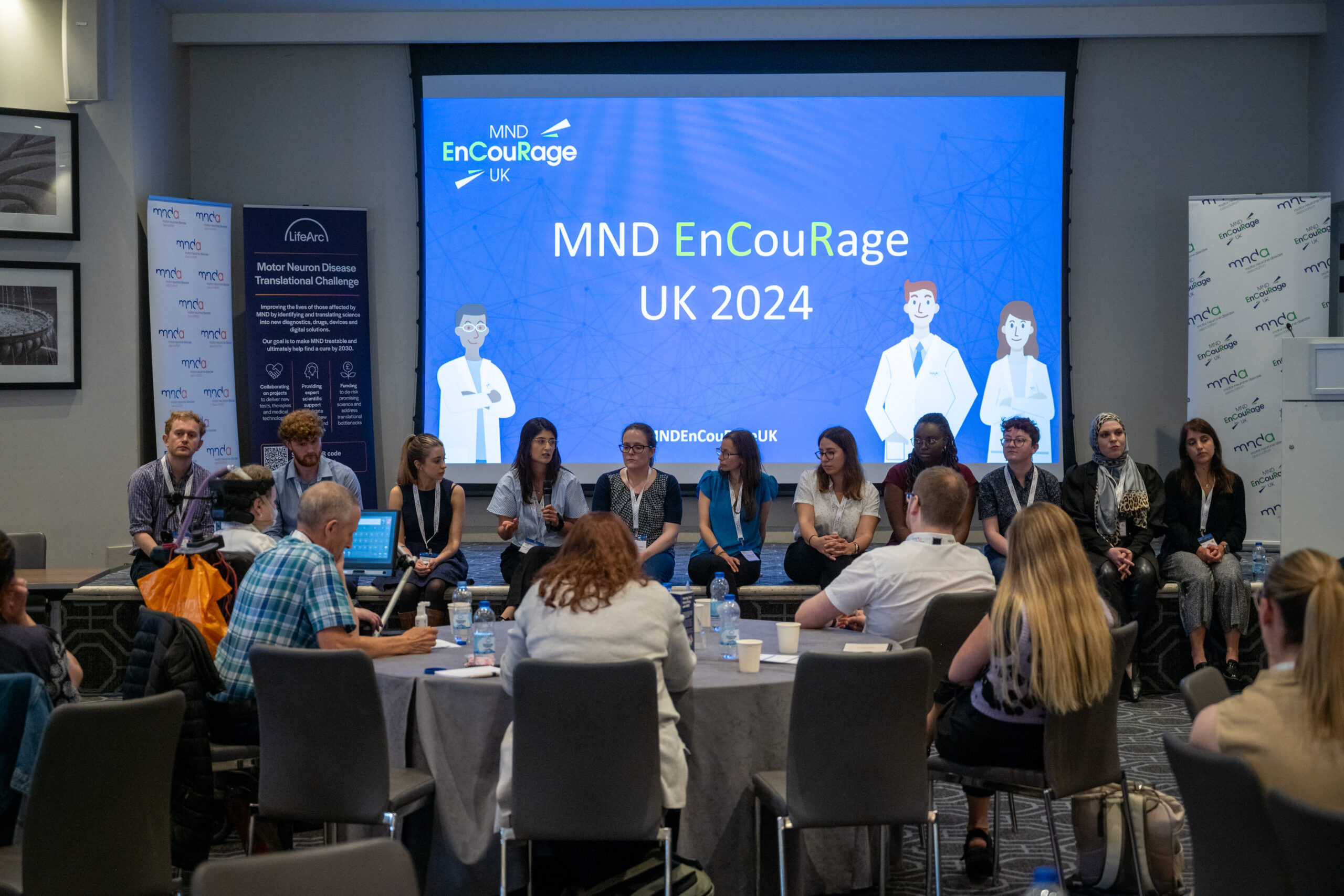It is known that people with MND experience different symptoms, and these are not just movement related. People with MND can experience difficulty speaking, breathing and swallowing, as well as changes in how they think and behave. It is thought that around 50% of people with the disease also develop changes in their thinking and behaviour. These changes can be detected and measured using several different assessment methods, called screening tools, which are delivered in MND clinics or remotely.
Due to the number of different tools available, clinics may not use the same assessment methods and it is unclear whether each of the different tools would lead to the same outcome for people with MND. This is because each tool uses different approaches and have different rules for deciding whether someone is experiencing thinking and behaviour changes.
Recent research at King’s College London has been conducted to help determine which is the best screening tool to use to detect thinking and behaviour changes in people with MND. We chatted to Lyndsay, a PhD student (funded by the MND Association) who worked on this research.

What did this study focus on?
The main aim of this study was to compare the ability of screening assessments to identify cognitive (i.e., thinking and language) changes or behavioural changes in people with MND, and determine which screen is the best to use in the clinic and why. We tested 3 cognitive screens and 5 behavioural questionnaire-like screens to investigate which of these were best at differentiating between people with MND who had cognitive or behavioural changes and people with MND who had none of these symptoms. We also assessed how well remote versions of these screens performed (as online questionnaires or through video call software) to see if there was a difference between doing the screens remotely or face-to-face.
Why was this research needed?
This research was needed as previous research studies had only looked at each screen individually or compared two different tools, but all of the tools available had not been compared with each other in the same study. By comparing all the screening tools in one study, this work has helped to further develop guidance for clinicians and researchers about the strengths and weaknesses of the different cognitive and behavioural tools. This will help them to make a more informed decision about which tool might be the best to use. If different tools are used, people with MND could receive an incorrect result about changes in their thinking and behaviour, which could affect the care and support they are given.
The pandemic created a requirement for screening tools to be used remotely, and these remote versions may be useful moving forward so we needed to assess how well they work.

RELATED TOPIC
Blog | 22 June 2021
Driving MND Research through our PhD studentships
What did the study find?
We found that the Edinburgh Cognitive and Behavioural ALS Screen was the best measure for screening for cognitive change in people with MND. It was the best at differentiating between people with and without cognitive impairment and was also the most suitable for use with people who have speech difficulties or muscle wasting in the arms and hands.
The best behavioural screening tool for people with MND was less clear. The Beaumont Behavioural Inventory (BBI) performed the best in terms of its ability to predict scores that would be found using the other screens, and scores on this tool could also be predicted by other behavioural screening tools. However, it may be less practical than the other screening tools because it takes longer to complete. The outcome of our review of other published research also suggested that the BBI or ALS Frontotemporal Dementia Questionnaire (ALS-FTD-Q) were the best behavioural screening tools, with the BBI being the most thorough and ALS-FTD-Q being briefer than the BBI.
The online questionnaire versions of the behavioural screening tools function similarly to written paper questionnaire versions of the screening tools. However, there was evidence that the remote versions of the cognitive screening tools may not function exactly like the in-person face-to-face versions. Therefore, if they are used remotely, they should have their own cut-off point. This cut off point may be higher or lower than the face-to-face cut off and is specific to only the remote version. It is the cut off point that is used to determine whether someone has cognitive impairment or not.
What do these results mean for people with MND?
Medical professionals will now be able to select which cognitive and behavioural screening measures to use, knowing more about their strengths and weaknesses.
Additionally, this study has determined that remote versions of the cognitive and behavioural screening tools are useful. People with MND may be tested for cognitive and behavioural changes remotely in their own homes in the future. This may save them time and money from travelling to NHS sites and enable them to stay relaxed while at home.
What are the next steps for this research?
Future research should investigate whether the in-person or remote screening tools identify the same or different people as having cognitive impairment. For example, if one specific screen was conducted in a group of people face-to-face and the same one was done remotely, would the same people be identified as having cognitive and behavioural changes? This research would also benefit from using more sophisticated statistical analysis and a larger number of participants.
Research may take demographic variables such as age into account in order to investigate whether these factors are linked to the effectiveness of the screening tools. Other research could assess the ability of different screens to detect change in cognition or behaviour in relation to genetic mutations or detect change in cognition and / or behaviour over time. Further research in this area could also assess the usefulness of the outcomes of these screening tools in making decisions about care and support for people with MND.
Lyndsay’s PhD was funded by the MND Association, and we would like to thank her for taking the time to share her research with us.






